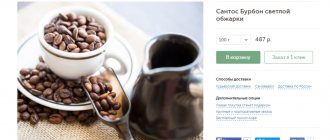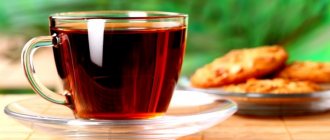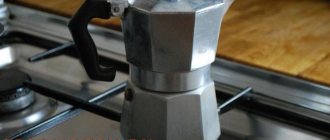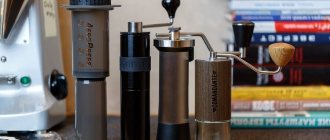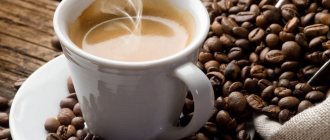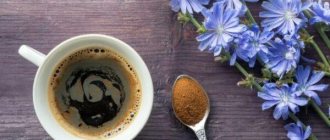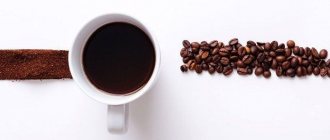We recently told you what to eat to prevent cardiovascular diseases. What if the diagnosis of “arterial hypertension” has already been made? The diet for hypertensive patients is overgrown with myths and causes a lot of controversy. To resolve our doubts, we turned to Anna Sergeevna Gabrielyan, a therapist at Moscow Hospital No. 17. Here's how she commented on readers' opinions about the menu for high blood pressure.
Pills or proper nutrition?
Once the doctor has prescribed medications to lower blood pressure, it is no longer necessary for hypertensive patients to monitor their diet.
It’s not true, there is no panacea pill. Of course, medications keep blood pressure normal. But the general condition still depends on what the person himself does with his body, first of all, how he eats.
For example, when getting rid of extra pounds (and hypertensive patients, as a rule, are obese), blood pressure decreases. Remember, with second-degree obesity, the risk of diabetes is already 93%, and if you are diagnosed with diabetes, the risk of heart attacks and strokes increases by 40-50%. That is, all the chances of cardiac and brain catastrophes can be significantly reduced by watching your diet!
And one more thing: if you follow your diet, you can reduce the dosage of the drug and even stop it, but, of course, under the supervision of a doctor. Very often, hypertension is caused by poor nutrition, as a result of which a person gains fat. Excess adipose tissue always causes fluid retention in the intercellular space. It puts pressure on the blood capillaries, creating a spasm. This spasm is transmitted to the arteries, which also narrow. To push blood into the narrow lumen, the heart begins to increase pressure. Reducing the amount of fat and water in the body will only help a hypertensive patient.
The effect of coffee on blood pressure
Does caffeine affect blood pressure? Discussions on this topic are still ongoing. Of course, coffee can have a certain effect on blood pressure, but not in the way that many people think.
To understand how coffee affects blood pressure, scientists around the world have conducted various studies for decades, during which it was found that caffeine, when introduced into the body, raises blood pressure for just a few minutes. After which it decreases and gradually returns to normal. It has been experimentally proven that giving up the drink reduces the indicator by only 1 unit, while constant drinking of coffee keeps the pressure normal or increases it by several units.
But coffee does not always affect blood pressure. A healthy person can use it completely calmly. Even drinking a few cups of coffee will not significantly affect your blood pressure. If the indicators were somewhat inflated, then they will remain at the same level or increase slightly. That is why it is necessary to drink coffee with caution if you have hypertension.
For people suffering from hypotension, this drink can provide invaluable benefits. Drinking coffee with low blood pressure helps get rid of symptoms such as headaches, dizziness, and loss of energy.
How do caffeine and blood pressure interact? After studying a group of people, it was found that coffee has completely different effects on blood pressure. During the experiment, the following patterns were revealed:
- For healthy people, caffeine increases blood pressure slightly or does not change the indicators at all.
- Drinking coffee for hypertension can significantly affect blood pressure, even to dangerous levels.
- It turns out that coffee lowers blood pressure for some people, not increases it.
- With regular consumption of the drink, the body gets used to caffeine, as a result of which blood pressure remains normal.
Without salt
Salt is harmful to hypertensive patients. When preparing food, you don’t need to add any salt to it at all. The body already gets enough salt from prepared foods. They always contain it - even bread, kefir and cottage cheese, not to mention cheese, sausage, and canned food.
Is it true. Salt retains fluid in the body and thereby increases blood pressure. Reducing salt intake to 5 g per day has been shown to reduce blood pressure by 10 millimeters of mercury, which is comparable to the effect after taking some antihypertensive drugs.
In addition, people with hypertension tend to be obese and are prescribed certain diets. When eating a low-calorie diet, consuming a lot of salt leads to muscle breakdown. Including the heart muscle, which naturally increases the risk of heart attacks and strokes.
For a healthy person, consuming salt up to 8-10 g per day is not dangerous, but if you have arterial hypertension, we recommend reducing it to 5 g - that is, a teaspoon of salt per day (do not forget to count the salt in prepared foods!). If the food seems bland to you, use lemon and herbs - they will give the dishes a pleasant, bright taste.
Is it necessary to reduce cholesterol and how to do it?
One of the factors that accelerates the development of atherosclerosis, and therefore increases cardiovascular risk, is an increase in cholesterol. If you have hypertension, be sure to check your cholesterol. If your blood pressure is high, then in addition to blood pressure medications you will need to take medications called statins. But for now let's talk about changing nutrition.
Fats are an essential component of the normal human diet. However, fat consumption in most developed countries of the world exceeds reasonable limits, which causes a number of negative consequences, including those associated with an increased risk of cardiovascular complications. Fats should make up no more than 30% of the total energy value of food, with saturated fats no more than 10%.
Patients with hypertension need to reduce their total fat intake, primarily animal and saturated fats, and increase their intake of plant-based, unsaturated fats. Foods rich in omega-3 and omega-6 fatty acids are especially beneficial. Omega-3 fatty acids are found in large quantities in fish and fish oil, and omega-6 fatty acids are found in vegetable oils, such as soybean oil.
Try to buy products with a reduced fat content: milk and fermented baked milk 1.5%, kefir 1 and 1.8%, sour cream 10–15%, low-fat cottage cheese and yogurt, lean meats and fish. Avoid fatty foods: smoked meats, lard, mayonnaise, margarine, fatty meats and fish, expensive fatty cheeses (more than 40% fat), butter, canned food. Fry with little or no oil in a non-stick pan or on a rack. When cooking, remove the skin from poultry and remove visible fat from meat. Try not to season salads with fatty sour cream or mayonnaise; use vegetable oil or salad dressings.
Is coffee good for hypertensive patients?
I read in one magazine that people with cardiovascular diseases can drink coffee. And the generally accepted recommendations are that it is harmful. Where is the truth?
There is no certainty here. Scientists, after much research, have discovered that there are two types of people: some quickly metabolize (that is, break down and absorb) coffee, others slowly. This type is determined genetically. And most often it does not change throughout life.
If a person metabolizes coffee quickly, then drinking 1-2 cups of coffee (meaning standard cups of espresso) reduces the risk of heart attacks and strokes by 18%. 3-4 cups also reduce the risk by about 10%, 5-6 cups - by 4%. That is, even a large amount of coffee reduces cardiovascular risks! But if a person metabolizes coffee slowly, the opposite is true. 1-2 cups increase the risk of heart attacks and strokes by approximately 5-6%, 3-4 by 10% and 5-6 by 18%.
How do you know what type you are? Watch yourself. If you drink coffee and almost immediately feel cheerful, strong, wake up, and your brain activity is activated, it means that you quickly metabolize coffee, and 1-2 cups a day are good for you. By the way, most people belong to this type. But if you drink coffee and don’t feel the effect, it means you metabolize coffee slowly. It will still cheer you up, but after 3-4 hours. For such people, coffee should be limited.
Coffee and hypertension
Coffee is one of the most popular drinks all over the world, it is known for its invigorating effect; many are unable to get to work without drinking a cup of their favorite drink. But there are diseases in which it needs to be limited, or even eliminated from the diet. Is it possible to drink coffee with high blood pressure? This is a pressing question, since every 3 people have a history of hypertension.
Coffee is an energizing drink, which means it can raise blood pressure. Many people conclude that hypertensive patients should not use it. But this is not true, since it has already been proven that you can drink coffee even if you are so sick, without harm to your health. With the right approach and moderate consumption of the drink, the functioning of the cardiovascular system will even improve.
Some time ago, doctors forbade people with high blood pressure from drinking coffee, but as time passed, the effect of caffeine was studied more, and categorical prohibitions were no longer practiced.
Today it is allowed to drink an aromatic drink with high blood pressure. In addition, it was found that even some hypertensive people who drink caffeine have lower blood pressure.
All this can be explained by the fact that the effect of coffee does not last long. Therefore, coffee is compatible with hypertension if consumed wisely. How much you can drink depends on your individual characteristics. A healthy person can consume 3-4 cups per day. But it all depends on personal tolerance to caffeine and the medications a person is taking. The genetically determined reaction plays an equally important role.
The strength of the drink consumed may vary. One cup of the drink can contain between 80 and 240 mg of caffeine. And instant coffee always contains more invigorating substances than natural coffee. Therefore, we can conclude that instant coffee is undesirable for hypertensive patients.
If you have hypertension, you can drink coffee only if you consult your doctor first. In this case, the doctor will determine how much is permissible to consume per day.
It is important to consider that this substance is addictive, and if a person drinks coffee for a long time, then he is less sensitive to it. This means that if before hypertension he drank a lot of an invigorating drink, then refusing it when diagnosing the disease can even be harmful.
Anyone can find out how sensitive their body is to caffeine. To do this, you will need to measure your blood pressure before drinking the coffee drink, and then 30 minutes, 1 hour and 2 hours after drinking it. And if blood pressure increased from 5 to 10 mm Hg. Art., this means that the body is sensitive to this drink. In this case, it is better to abandon it completely.
Everyone, and especially hypertensive people, has their own “working” pressure, and this indicator is individual. And if it deviates from its norm for some reason, then you should give up coffee, since changes are very dangerous. People whose working pressure is high should not drink the drink.
Can hypertensive patients drink tea?
Hypertensive patients can drink green tea, but black tea cannot, since the former normalizes blood pressure, while the latter increases it.
As for green tea, this is true . It contains many antioxidants, due to which it improves the functions of the heart and nervous system, fights aging, and promotes additional fat burning during physical activity. Therefore, green tea is beneficial for everyone.
Black tea is more tonic and indeed contains more caffeine-like substances, but so far doctors are not clear whether black tea is harmful or not for cardiovascular diseases. The exception is very strong black tea, which is definitely not worth drinking if you have hypertension. And in general, observe how the tea you drink affects your well-being.
Is it possible to drink coffee and drinks containing caffeine if you have hypertension?
The consumption of coffee and drinks containing caffeine is considered individually in each specific case. Massive studies have not yet provided evidence that coffee consumption is accompanied by an increased risk of cardiovascular complications in patients with hypertension. There is also no evidence that coffee contributes to a persistent increase in blood pressure. At the same time, some people have an increased sensitivity to caffeine, and drinking coffee in them will be accompanied by a short-term increase in blood pressure in combination with tachycardia and episodes of heart rhythm disturbances. For such people, it is better to replace coffee with special coffee drinks containing chicory, barley or rye.
Meat or fish?
Red meat contributes to the development of atherosclerosis; it is better to replace it with fish.
It is true that red meat is not the best food for hypertensive patients. We now eat a lot more of it than our great-great-great-grandparents. Even 40 years ago, meat was eaten less often: only in autumn and winter, more often in soups, pies, and cutlets. They baked meat in pieces and ate it this way mainly on holidays. The recommendations of the World Health Organization are as follows: after 40-45 years, it is recommended to give up red meat.
But what if a person is allergic to fish? Sea and river fish actually have less sodium than meat. But if you don’t like fish or it causes an allergic reaction (itching, rash, hay fever, sore throat), choose lean cuts of meat - skinless chicken or turkey breast, pork tenderloin, lean beef, veal. Contrary to popular belief, pork liver is not fatty and can be consumed for hypertension.
The method of preparation is especially important. It is better not to fry, but to bake in the oven or grill, boil, stew or steam. By the way, this also applies to fish. If you roll it in flour or batter and fry it in oil, do not flatter yourself with the hope that this is a dietary dish.
But fish oil is a fat that is very useful for hypertensive patients. It contains polyunsaturated fatty acids that protect blood vessels from cholesterol plaques. Eat any fatty fish (boiled, stewed, baked), but preferably at lunch: heavy food at night is undesirable.
Instead of sweets - dried fruit compote
Sweet foods are harmful to hypertension. They can be safely replaced with fruit.
Only partly true. Fruits are a good choice, but not more than 200 g at a time. Sour and sweet apples are absolutely equal in calorie content, the former only have more fruit acids. Moderately firm pears, citrus fruits, kiwis, frozen berries are an excellent snack. One banana is a wonderful source of potassium, which removes excess water, plus it saturates for a long time. There is too much sugar in dried fruits, but a compote made from them (without sugar, of course) will “collect” all the potassium that is so necessary for hypertension from the fruits and thereby help remove swelling.
Away from fast food
If you have problems with the cardiovascular system, fast food is real poison.
Is it true. Although it is not recommended to abuse it for people with healthy blood vessels. Hypertensive patients need to eliminate foods that contribute to weight gain and water retention. These are all fatty foods, dishes where fats are combined with large amounts of carbohydrates, as well as fried foods. All of the above is a “trick” of fast food.
Dishes from the menu of such establishments contain a lot of salt, i.e. sodium, which retains water. In addition, the combination of salt and sugar is a favorite chef's move when preparing any sauces, pastry creams and dough, cookies, even chocolate. Salt sets off sugar and thereby increases the palatability of food. So, as you can see, by giving up fast food, ready-made sauces, baked goods, fatty and fried foods, you will significantly reduce the amount of sodium, fat and simple carbohydrates in your diet.
Advertising
High blood pressure in the summer heat. How to escape?
Too much heat quickly turns into autumn slush, puddles and rain, and then frost is not far away. And every year this picture goes in circles, causing more and more difficulties for people. People who have a history of persistently impaired blood pressure especially suffer from such changes in temperature. And while the vast majority of people know how to provide first aid to hypertensive patients, with hypotensive patients it is not so simple.
In some cases, they themselves do not understand what needs to be done to increase blood pressure, which has decreased due to the heat. For example, can I drink a cup of strong coffee, or is it better to take a medication prescribed by a doctor?
The ideal blood pressure for any person is 120/80; 110/60 is considered acceptable. If the bar drops a few millimeters of mercury lower, then consultation with a doctor is necessary.
Due to low pressure, the full functioning of internal organs is disrupted, neurocircular dystonia, endocrine disorders, and adrenal cortex deficiency may occur. Therefore, it is necessary to find out why blood pressure drops in the heat? What to do in such a situation, and which medications increase blood pressure, tells the edstar portal.
Why does blood pressure drop in hot weather?
High air temperatures are poorly tolerated by many people. It is the hardest for hypertensive and hypotensive patients. For the first, these are upward pressure surges, accompanied by a whole range of negative symptoms. In general, the best climate for hypertensive patients does not involve heat.
And in hypotensive people, blood pressure drops sharply, which leads to weakness, tinnitus, clouding of consciousness, severe headache, pain in the heart, nausea and other negative symptoms.
As medical practice shows, blood pressure often drops due to temperature changes, in particular in hot weather and extreme cold.
If a healthy person feels slight discomfort in the heat, and maybe there is no deterioration in health at all, then with hypertension the person will suffer and suffer until the weather conditions become acceptable for him.
Signs of low pressure in hot weather:
— Frustration, apathy, unreasonable fatigue. - Nausea, maybe vomiting. — My temples and the back of my head hurt. - It’s difficult to breathe, there seems to be not enough air, resulting in a state of panic. — Increased sweating, impaired visual perception, numbness of the hands. - Increased irritability, absent-mindedness. Sometimes there may be fainting.
This entire clinical picture characterizes the condition of hypotension. And with a sharp decrease in blood pressure, it is necessary to raise it by all available means, since complications of this condition can be serious and life-threatening. Against the background of heat, blood viscosity increases, vascular walls lose their tone, the human body lacks oxygen, and adaptation mechanisms decrease - this is why blood pressure decreases in the heat.
What to do if you have low blood pressure?
It is worth saying right away that the treatment of arterial hypertension and hypotension should always be comprehensive. Therapy involves a healthy diet (consuming only approved foods), optimal physical activity (cycling, swimming), and regular medication.
If the pressure has dropped slightly, a hypertensive person can drink one cup of coffee, but no more. Since this drink in large quantities negatively affects the functioning of the cardiovascular system.
It is recommended to breathe from your belly throughout the day. Why is that? Doctors say that one of the reasons for the decrease in pressure is pinching of some part of the vascular system due to muscle tension.
Therefore, if you do breathing exercises using slow deep breaths and exhalations, this will help relax the muscle corset and blood pressure will increase.
Tips for hypotension in the heat:
Drink 250 ml of regular still water every 80-90 minutes. If the blood is too thick, the blood pressure becomes lower as it moves slowly through the blood vessels, so you need to drink as much water as possible to increase the viscosity of the blood.
A contrast shower lowers blood pressure. This simple measure is suitable not only for hypotensive patients, but also for hypertensive patients. Contrast water procedures increase the tone of the vascular walls, resulting in normalization of blood pressure.
Instead of coffee, drink a refreshing juice. Definitely, coffee can increase blood pressure as quickly as possible, but if the cause of the heat is neurocircular dystonia, then caffeine, once in the body, will lower the pressure even more.
Massaging blood vessels. During the heat, the human body lacks oxygen, and the vascular walls lose their tone. Walking will help increase blood pressure, since during movement not only the muscles of the lower extremities work, but also the fibers of blood vessels.
If the day promises to be hot, then immediately after sleep you can take this “drink”: add 10 drops of eleutherococcus to a glass, or ginseng tincture, take on an empty stomach. Duration 2-4 weeks.
For hypotension, diet is important, since not only the composition of the blood, but also the health of the vascular walls depends on the products. You need to include red caviar, liver, spices, various berries, vegetables, and seasonal fruits in your menu. Acupuncture can effectively cope with increased blood pressure. To do this, you need to press on a person’s biologically active points for 4-6 minutes.
As practice shows, after such manipulation the pressure normalizes, increasing to the usual level.
What to do if you have high blood pressure?
Heat with hypertension negatively affects a person, leading to serious disorders and disruptions in the functioning of the body. In hot weather, hypertensive patients should not self-medicate and if they feel unwell, they should visit a doctor.
All medications previously recommended by the doctor should always be with you. Be sure to always carry a small bottle of water with you. It is important to remember that you need to drink water wisely. Abuse of fluids can lead to swelling of the lower extremities and shortness of breath. And with low water consumption: blood viscosity will increase, the likelihood of blood clots will increase several times, as will the risk of developing a heart attack or stroke.
Speaking of water, it is assumed that all liquids are consumed: first courses, compote, juice, tea, mineral water, and so on.
Tips for hypertensive patients in hot weather:
— Don’t forget to take the necessary medications. — You can’t stay in the scorching sun for a long period of time. — Herbal medicinal tea (the mixture can be purchased at a pharmacy) will help reduce blood pressure. — In summer, it is recommended to wear light-colored clothes and be sure to wear a hat. — The ideal time for a walk is before 11:00 am and after 17:00 pm. — Avoid sudden changes in temperature. For example, you can take a cold shower after a hot street. — Eliminate any physical activity from your lifestyle. Walking should be slow and leisurely, it is better to choose shady places; and there’s no point in talking about playing sports in the sun - it’s strictly prohibited. - In addition, exclude alcoholic beverages, fried and smoked foods, and fatty foods from your diet. It is better to give preference to fresh juicy fruits, vegetables, and cool fruit drinks. Mandatory strict and targeted diet for hypertension.
In the summer, as a rule, if there is a high temperature outside, the doctor reviews the dosage of medications and the frequency of their administration in order to improve the patient’s quality of life in the summer.
In a number of situations, if a patient has increased blood viscosity due to arterial hypertension, blood thinners are necessarily recommended to prevent the formation of clots.
So, in order to survive the hot season, you need to follow the main recommendations and not rush anywhere. Do not engage in sports, enjoy moderate optimal exercise through swimming in a lake or river, pleasant walks in the evening and relaxing rest, watch your diet. All this will help you enjoy summer days without changes in blood pressure.
https://grodnonews.by/news/zdorove-i-krasota/vysokoe_davlenie_v_letnyuyu_zharu_kak_spastis.html
What to dress the salad with
Vegetables should be on the menu for hypertensive patients. Salads can be eaten three times a day.
True, vegetables are the healthiest foods in a diet for hypertensive patients. Doctors recommend zucchini, eggplant, cucumbers, leafy greens, all types of cabbage, carrots, radishes, and daikon. They contain a lot of potassium, which, as opposed to sodium, removes excess water. Therefore salads are really recommended.
But salads are different. Herring under a fur coat, Olivier, and mimosa, which are popular among Russians, will have to be limited, since the potatoes, corn, and peas they contain are a large amount of carbohydrates, the herring is salty, and mayonnaise adds a lot of calories.
Salads made from fresh and green vegetables are safe, but here you should not overuse mayonnaise or large amounts of vegetable oil (even olive oil!). Remember, 100 g of this oil is equal to 1000 kcal. It is better to season the dish with natural yogurt; it is good to add spices (mustard, ground pepper, garlic, curry, turmeric). Low-fat sour cream will also work.
So how do you make decaffeinated coffee?
Swiss approach
The Swiss Water Process is also known as the water method. It is not at all surprising that this particular method turned out to be the most environmentally friendly, and as a result, expensive and complex.
Green coffee beans are poured with hot water, and after cooling, the water is drained through a carbon filter. It holds the caffeine and all the coffee aromatic oils remain in the water. This water is heated and the grains are poured back into it. The procedure is repeated up to 6 times, after which the caffeine content in coffee is reduced to a tenth of a percent, and the amount of aromatic oils remains virtually unchanged.
As you guessed, the end result is the most harmless decaf, preserving all the flavor and aroma qualities of bean coffee. Colombia Decaf decaffeinated coffee, which you can buy in our store, is made exactly in this way.
Direct method
The most common method, although not only water is involved in its process. After steaming the beans for half an hour, they are soaked for several hours in a common solvent: ethylene chloride or methylene chloride, which removes caffeine from the beans. This is followed by soaking in water to remove any remaining chemicals.
There are two main disadvantages with this approach: firstly, chemical solvents destroy not only caffeine, but also a significant part of what we all drink coffee for - aroma and taste. Secondly, there is always the possibility that some of the solvent remains in the grains. However, this is exactly the kind of decaf you will most likely find on the shelves of chain supermarkets.
CO2 extraction
Despite the scary name, carbon dioxide extraction is close to the Swiss water method. First, the grains are doused with hot steam and placed in a container where high-temperature CO2 is supplied under high pressure. The beans remain exposed to the gas for several hours, and the caffeine released from the gas settles on the filters. After this, the supply is stopped and the gas is pumped out.
Gas- and caffeine-free beans retain all their rich taste and aroma. As with the water cleaning method, in this case coffee is absolutely harmless to health.
